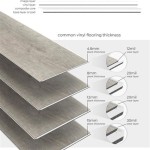The Essential Guide to Replacing Wood Floors: Average Costs and Considerations
Are you contemplating upgrading your home's flooring with the timeless appeal of wood? Before embarking on this exciting project, it's crucial to understand the potential costs involved. This comprehensive guide will shed light on the average cost of replacing wood floors, taking into account various factors and materials.
Factors Influencing the Cost of Replacing Wood Floors
The cost of replacing wood floors can vary significantly based on several key factors:
- Type of wood: Different wood species, such as oak, maple, and bamboo, have varying prices.
- Grade of wood: Higher-grade woods with fewer imperfections are more expensive.
- Flooring style: Solid hardwood, engineered hardwood, and laminate flooring have different price points.
- Square footage: The size of the area being floored directly impacts the overall cost.
- Labor costs: The cost of labor for installation can vary by region and the complexity of the project.
- Existing floor removal: If you need to remove existing flooring before installing wood floors, this will incur additional costs.
- Materials: Additional materials, such as underlayment, moldings, and adhesives, also contribute to the overall cost.
Average Costs of Replacing Wood Floors
To provide a general estimate, the average cost of replacing wood floors ranges from $6 to $15 per square foot, including materials and labor.
Here's a breakdown of the average costs for different types of wood flooring:
- Solid hardwood: $8 to $15 per square foot
- Engineered hardwood: $6 to $12 per square foot
- Laminate flooring: $3 to $8 per square foot
Additional Considerations for Replacing Wood Floors
Beyond the average cost of materials and labor, there are additional expenses to consider when replacing wood floors:
- Subfloor preparation: If your subfloor is not level or smooth, you may need to level it or install an underlayment, adding to the cost.
- Moldings and trim: Baseboards, molding, and other trim pieces contribute to the overall look and cost of the project.
- Furniture removal and reinstallation: If furniture needs to be moved during the installation process, this could incur additional charges.
- Professional cleaning: After the installation is complete, a professional cleaning is recommended to protect the new flooring.
Tips for Saving on Wood Floor Replacement Costs
To minimize the cost of replacing wood floors, consider these tips:
- Consider less expensive wood species: Some wood species, like pine or birch, are more affordable than exotic or high-end woods.
- Opt for lower-grade wood: While higher-grade woods offer fewer imperfections, lower-grade woods can still look great and cost less.
- Negotiate with contractors: Get quotes from multiple contractors and negotiate a competitive price for labor and materials.
- Do some of the work yourself: If you're handy, performing tasks like removing old flooring or installing moldings can reduce labor costs.
- Shop around for materials: Compare prices from different suppliers to find the best deals on wood flooring and materials.
Conclusion
Replacing wood floors is a significant investment that can enhance the beauty and value of your home. By understanding the average costs and considering the various factors and materials involved, you can make informed decisions that fit your budget and design preferences. Remember to obtain estimates from multiple contractors and explore ways to save money while ensuring a high-quality installation.

How Much Does Flooring Installation Cost 2024 Guide

How Much Does It Cost To Install Engineered Hardwood Floors

How Much Should Wooden Flooring Cost In 2024 Checkatrade

How Much Does Hardwood Flooring Cost 2024 Guide

How Much Does Hardwood Flooring Cost 2024 Guide

Floor Replacement Cost To Refloor A House Fixr

Average Flooring Cost For Hardwood Installation Cmo

How Much Does Hardwood Flooring Installation Cost 2024 Data Angi

How Much Does Flooring Installation Cost 2024 Guide

Best Wooden Flooring Costs And Benefits Of Livspace
See Also







